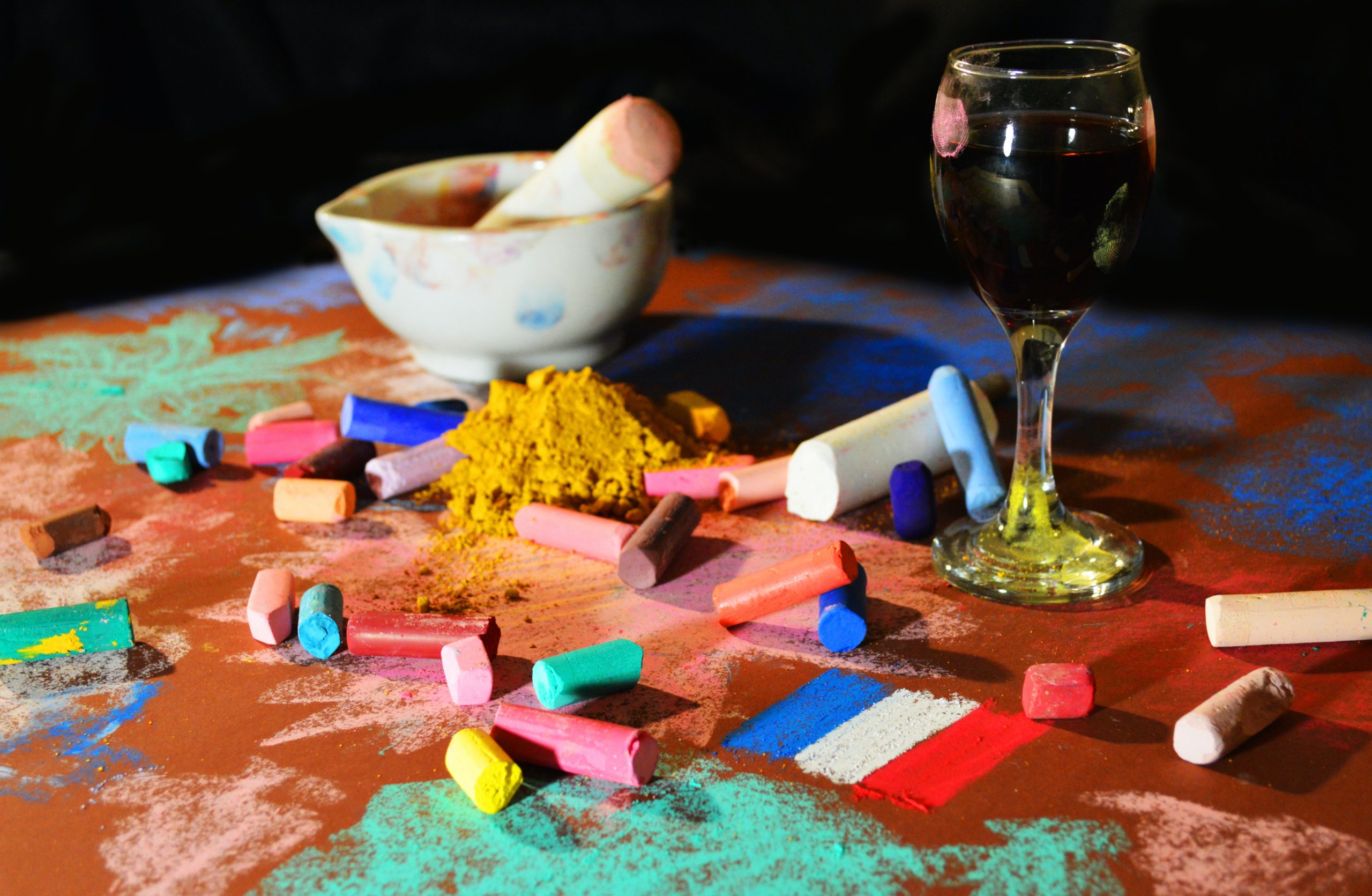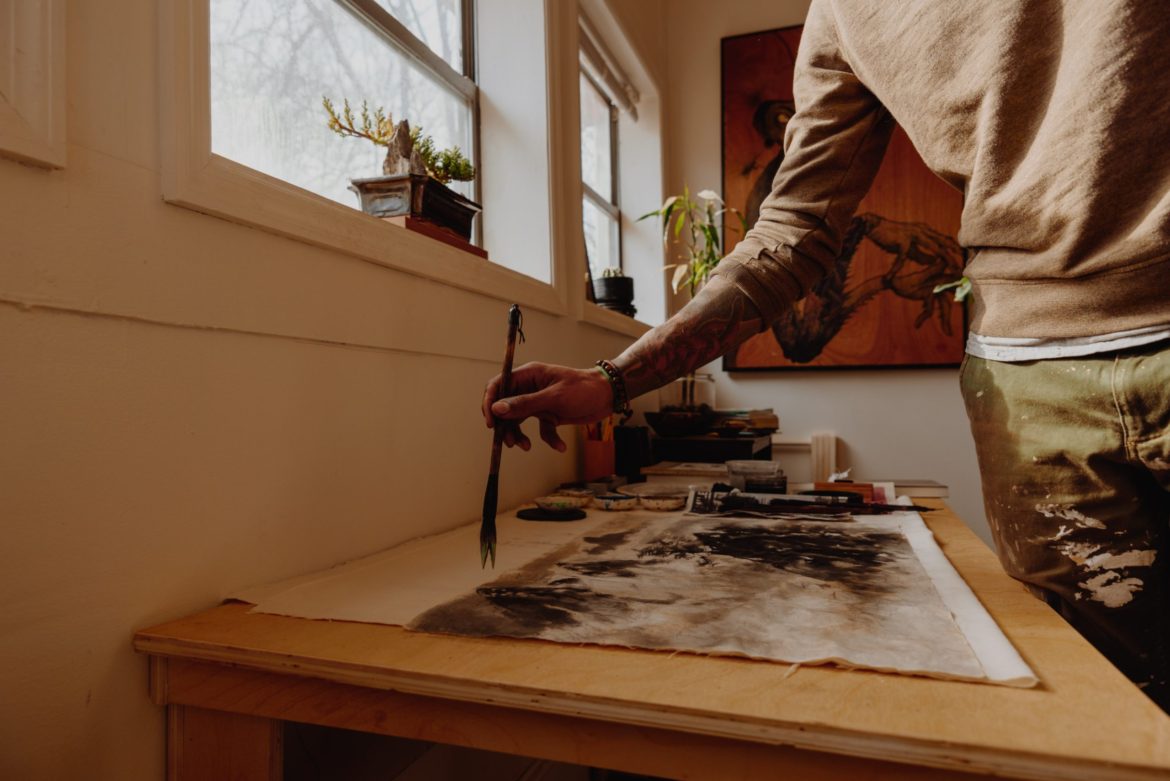The act of creating something is a phenomenal experience. But as every creative knows, the end of the project often determines how we feel about the project. It can be attributed to glory and recognition for being a prolific artist, or can be attached to soul-crushing rejection—it doesn’t get sold, the boss passes it over, you get a form letter, or the agent turns you down. Sometimes the rejection may take the form of bad reviews or your work being ignored. Whatever the case, it’s hard not to let rejection nullify the beauty of the artistic journey and maybe put an end to the journey altogether. At the same time, it’s unhealthy to focus solely on the highs so that we stop creating for ourselves and instead focus on what we believe our audience wants.
In the book Where’d You Go, Bernadette by Maria Semple a colleague tells the gifted but floundering architect Bernadette, “People like you must create. If you don’t create, Bernadette, you will become a menace to society.” And a menace she became. The character Bernadette let the noise of the outside world cripple her inner creativity. And with nowhere to channel her artistic impulses, she lapsed into depression, anxiety and a general pit of anger. Only when she learned to focus on the process again did she free herself and live in a space of positive impulses.
When you are able to freely access your creative spirit without the need for applause, you’ll experience the magic of turning nothing into something and the high that comes from getting lost in the act. And of course, there’s the sense of peace that comes from letting go of outside expectations. Below are tips to help you turn down the volume on applause, or lack thereof, and turn up the volume on your art.

(David Clode)
1. Create Like You Breathe
For those of you with an artistic spirit, art is your oxygen. You do it because you have to in order to live. Art is life-sustaining, just like breathing. However, with inhaling and exhaling, you’re not looking to the outside world. You’re not asking for someone’s approval or hoping for reassurance after each breath. It’s simply a part of being.
2. Realize Numbers Don’t Matter
Some argue that paintings are meant to be seen by viewers, music is meant to be heard and writing is meant to be read. If not, what’s the point? But how many audience members make the art worthwhile? Do 100 people need to see the sculpture? Or 100,000? Is that not enough? Will 10,000,000 do? Is an audience of one ever enough?
3. Change Your Expectations… and Your Daydreams
The expectations you have for yourself and your art are both conscious and unconscious. Consciously, you may set goals and objectives and think about where you want to be in five years, whereas a lot of your unconscious expectations may come out in daydreams. Everyone should be able to dream big and no one should have to lower their expectations, but the reality is your expectations will almost invariably need to be tweaked.
If one road is blocked for you, it’s not giving up to find an alternate path. For example, maybe you can’t make a living doing what you are doing at this point in your life, but don’t let that crush your creative spirit. Always look for another outlet.

(Vidar Nordli-Mathisen)
4. Develop Mental Toughness Like an Elite Athlete
Mental toughness or “grit” is a concept that began in the sports community, but has now been shown to be a vital trait across multiple situations. Mental toughness boils down to getting the job done despite negative things that might be hurled at you from the outside world. You simply preform, do what you were trained to do and do it well. Mentally tough people are confident, persistent, resilient and determined. Mentally tough artists don’t let negative reviews or a lack of response from the audience get in their head.
5. Build Your Self-Esteem
In order to build your self-esteem, you’ll first need to examine what situations or events cause your self-esteem to plummet. Try journaling during the times you feel the worst about yourself and identify the negative self-talk that seeps into your consciousness. For example, when you are around people you perceive to be more successful than you, do you put yourself down like: “Why haven’t I gotten there yet?” “What’s wrong with me?” “I must not be good enough?”
Then begin to focus on where the low self-esteem has its origins. Did your parents give you conditional love instead of unconditional love? Were you bullied in school?
6. Work on Becoming Self-Actualized
According to well-known psychologist Abraham Maslow, self-actualized people freely express their inner nature and work toward fulfilling their potential. It’s about becoming the best self you can be—and a large part of that is nurturing your creative side.
Self-actualized people often experience “flow” or “being in the zone.” When you are working on a project and are in flow, you may be so absorbed in the process that you lose all sense of time and the outside world recedes into the background. Many artists relish flow in creative moments, but then feel that outside reaction somehow diminishes the beauty of what they previously experienced. Don’t let it!
The act of creating is beautiful. Work on compartmentalizing the process versus the reaction afterward. As much as possible try not to let one bleed into the other. Of course, it’s easier said than done, but those who are able to accomplish this may be rewarded with a deeper sense of their creative self!











Leave a reply